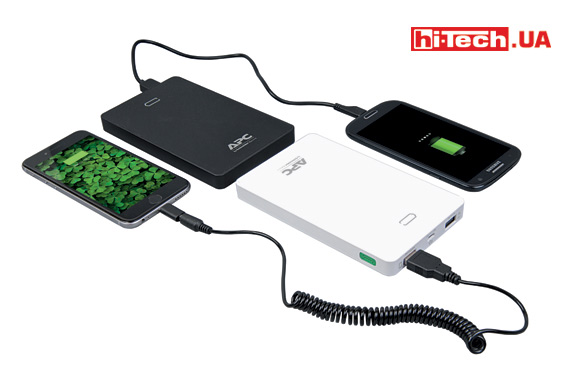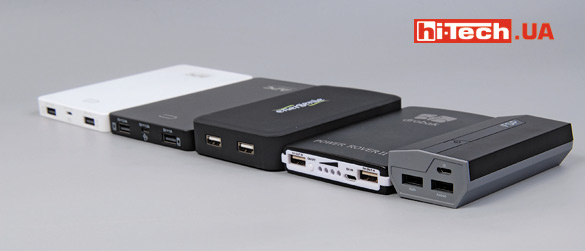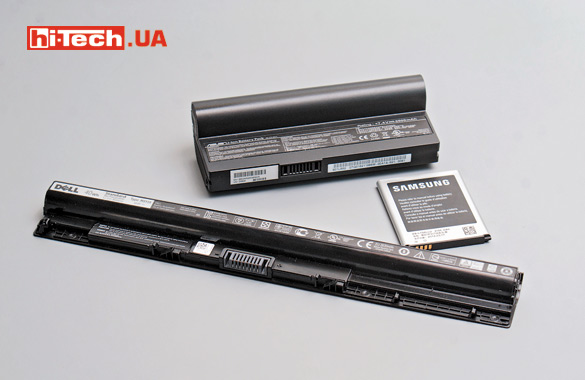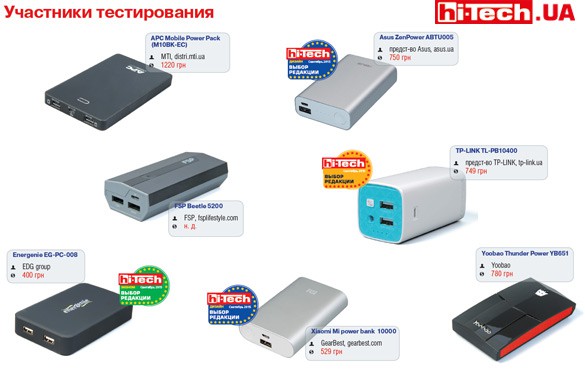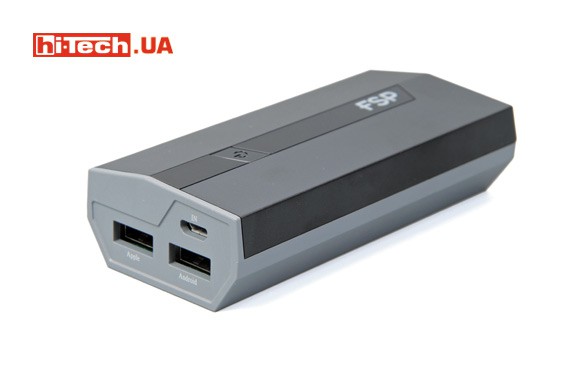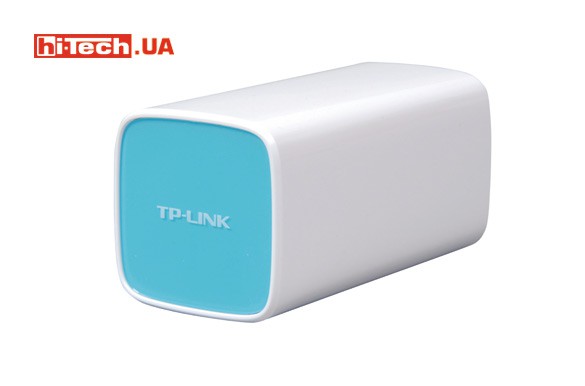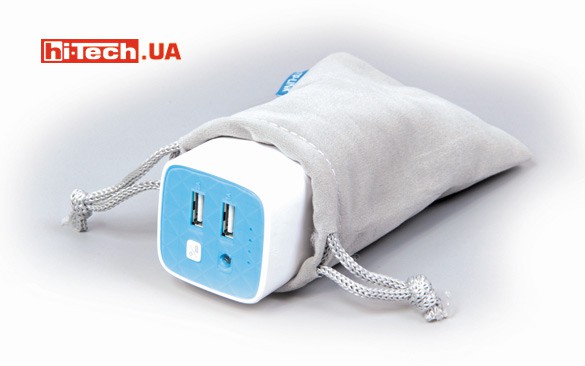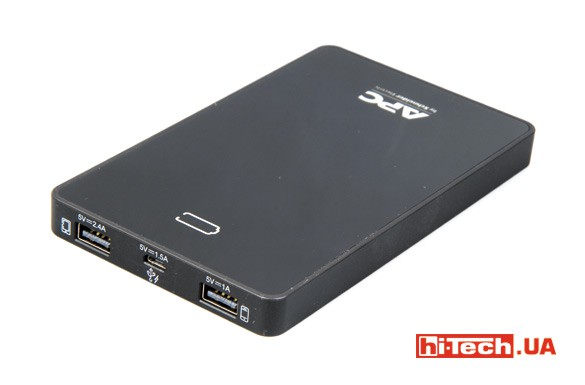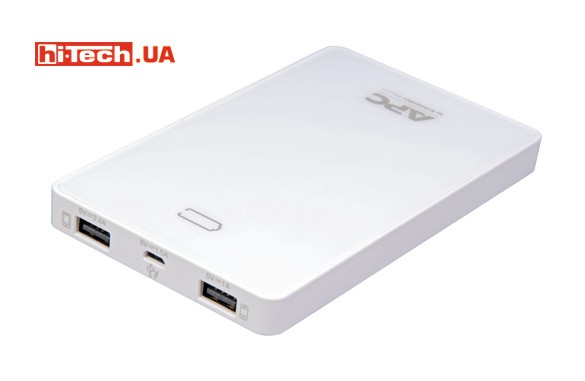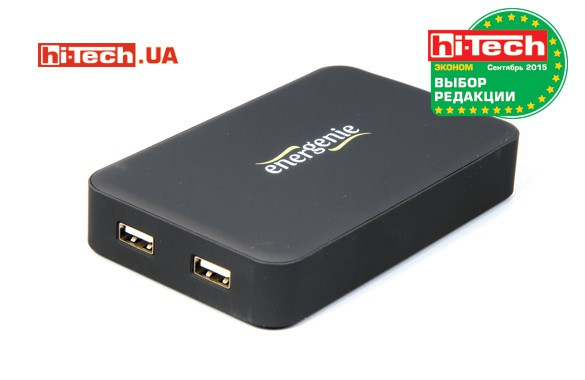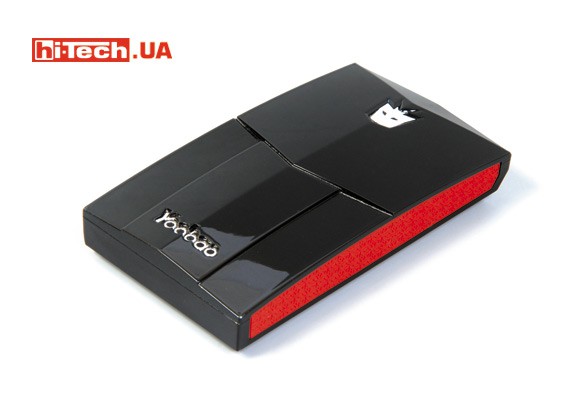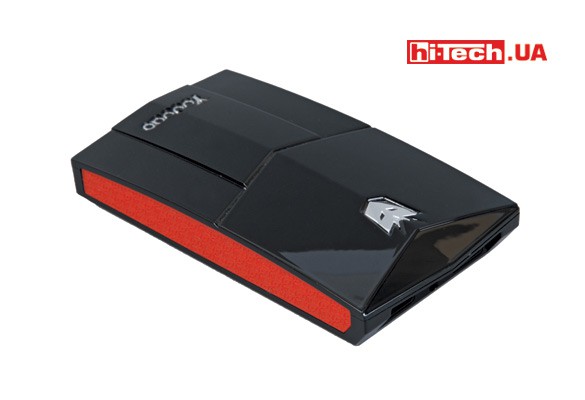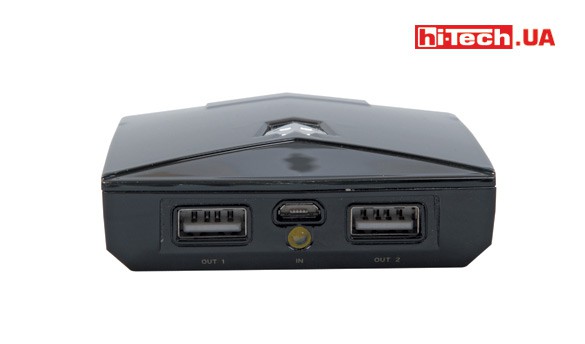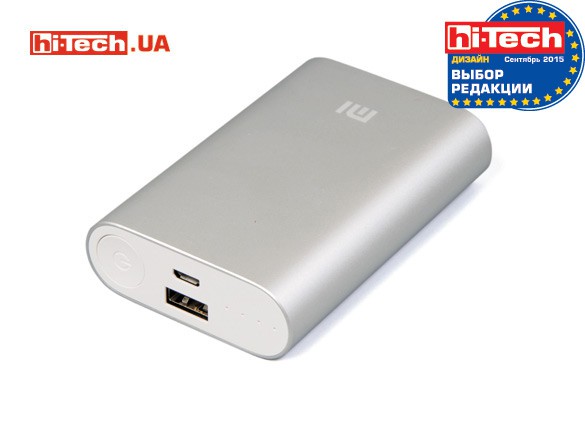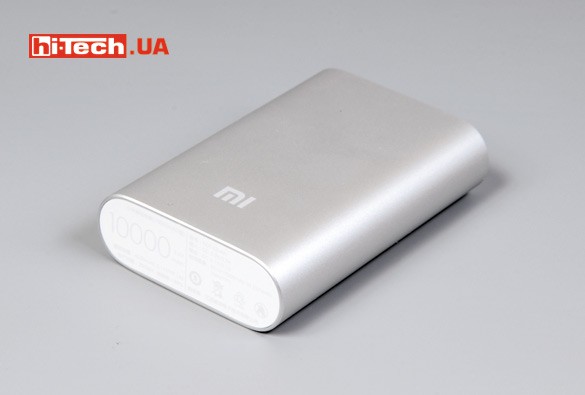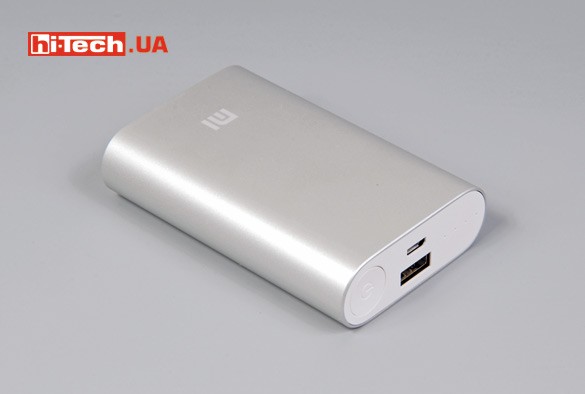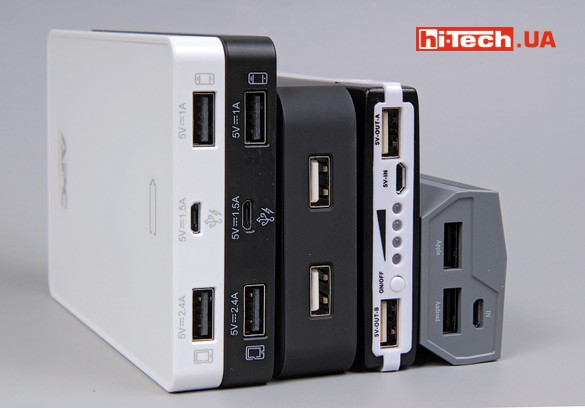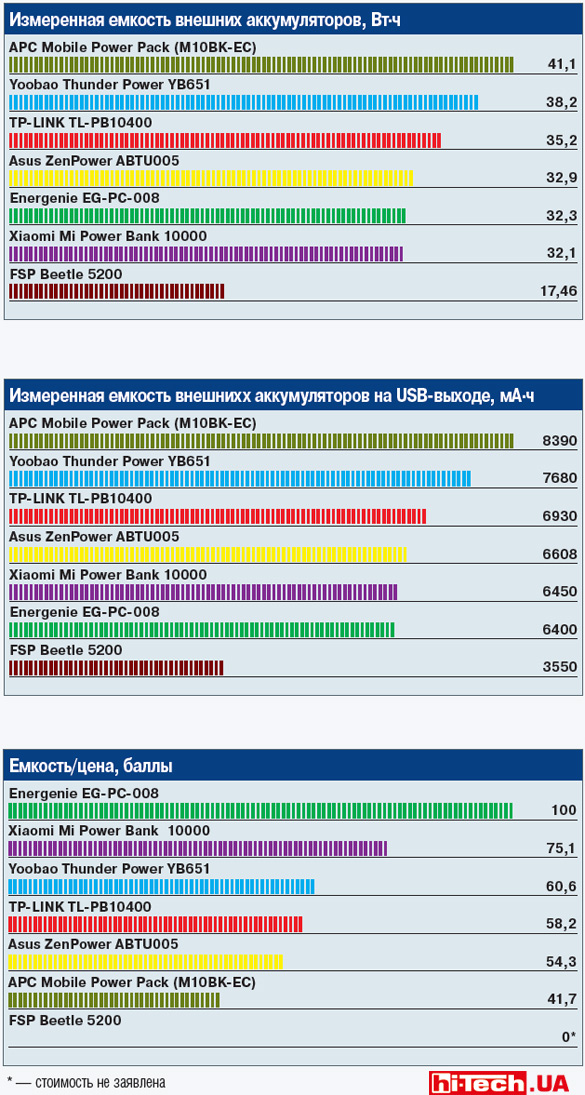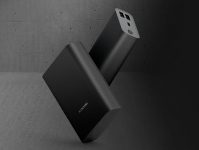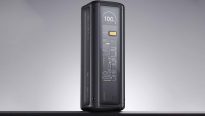Bottomless barrel: 7 popular power banks comparative test
28.08.15External batteries are one of the most popular accessories for mobile devices today. What features do these devices have and how to choose the right model? We answer these and other questions in our comparative test.
With almost every generation of smartphones, manufacturers increase the capacity of built-in batteries. But despite this, with intensive use, most models still run out of charge towards the end of the battery, if not sooner. This is due to the increase in screen diagonals, which require high energy consumption, as well as powerful chipsets, not only in terms of performance, but also in terms of energy consumption.
The idea of increasing battery life using an external battery is far from new. Previously, external batteries, which were cases for smartphones or special modules connected to a smartphone connector, were relatively popular. Such batteries could often only slightly extend the life of a mobile device. They were usually not enough even for a single full charge of the gadget.
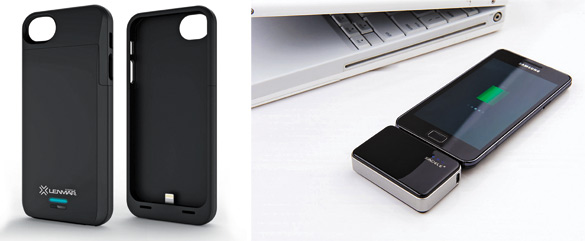
At one time, external batteries in the form of a bumper for a phone or a docking device were relatively common. But now, separate devices with USB connectors are more popular.
Due to the growing energy needs of mobile devices (smartphones) and the spread of tablets, external batteries with a USB connector or connectors, which we sometimes also call power banks (from the English designation Power Bank), have now become very popular.
Depending on the capacity of their batteries, they are capable of charging modern smartphones several times, or providing a full charge of even powerful 10-inch tablets. Smartphones and tablets are given as an example. You can use external batteries to charge any devices that use a USB connection, or for power supply (USB flashlights, USB fans, etc.).
The popularity of fairly powerful external batteries today is partly due to the reduction in the cost of the battery cells themselves, which are equipped with Power Banks.
There are also options when the functionality of an external battery is implemented in other devices, for example, in stand-alone mobile routers, universal devices such as Kingston MobileLite Wireless G2. Some smartphones can also act as an external battery. Power banks themselves sometimes also acquire additional functions, such as a flashlight or wireless charging (LUXA2 TX-P1).
Do it yourself
Most power banks on the market are supplied as a ready-made device, but you can also find options where the user must equip the device with battery cells themselves.
Typically, such “blanks” are designed for the use of cylindrical Li-ion batteries of size 18650 (one or more). By the way, many batteries for large laptops use just such elements. They are also common in modern high-power compact flashlights.
The advantage of this solution is that you can choose the 18650 elements yourself (capacity, manufacturer, etc.) to your taste.
Features
All external batteries discussed in this material, with very rare exceptions, contain Li-ion or Li-pol cells inside. The choice of this type of element is easily explained, because such elements are capable of delivering high current, are free of problems associated with the “memory effect”, and have good capacity per unit volume.
There are models equipped with both 18650 barrels (for example, TP-LINK, Xiaomi, Asus, FSP, presented in this review) and flat elements in the form of plates.
In addition to rechargeable batteries, power banks also contain a special controller that converts battery voltage to +5 V on USB connectors, controls overloads, monitors battery condition, etc.
By the way, a USB connection is also used to charge the power banks themselves. Of the eight devices in our review, only one was equipped with a network adapter. It is assumed that to charge the power bank you will use the charger from your gadget or the USB port of your computer.
The simplest models are equipped with one USB port and provide a charging current of up to 1 A. More advanced devices have several ports and provide a charging current of 2 A or higher.
Auto-shutdown functions when there is no load and shutdown when your gadget is finished charging are very common in power banks. But the possibility of “transit” charging, when the Power Bank can charge itself and simultaneously charge a device connected to it, is quite rare and was found only in Xiaomi, Asus and APC. We connected the power bank to the charger, and the gadget to the power bank, left it overnight – and the next morning we received both charged devices (if there is enough time). Comfortable.
How many times can I charge my smartphone?
The battery capacity of mobile devices is most often indicated in non-system mAh units. To simplify, for example, a value of 1000 mAh means that the battery is capable of delivering a current of 1000 mA or 1 A for one hour (or 0.5 A for two hours).
If the capacity of the power bank is 10,000 mAh, it turns out that I can charge a 1000 mAh battery ten times? No I can not.
If we discard the option when an unscrupulous manufacturer (found in various “nameless” devices) knowingly provided false information and inflated the data, then, speaking of charging smartphones or tablets from external batteries with a USB connection, at a very rough calculation, from the specified capacity of the power bank you need subtract approximately 35%. This is how much total charge can be accumulated by the battery of a mobile device that you charge from a power bank. With a capacity of 10,000 mAh power bank, you can fully charge a 2100 mAh smartphone battery three times or a 6500 mAh tablet battery once.
Where does the rest of the energy go? It is mainly spent on heating the power bank controller, which increases the voltage on the battery cells to approximately +5 V (USB port voltage), heating the charging controller in the smartphone itself, which converts the voltage and currents from the USB port into those necessary for charging the smartphone battery, and for heating batteries in smartphones and power banks.
Let us repeat that the indicated 35% is a very rough figure. It depends on many parameters: the advancedness of the controllers in the smartphone and power bank, the characteristics of the batteries, their state of charge, etc. But if you need some kind of starting point, then 35% can be used for calculation.
Do not forget also that as you use it, the battery capacity decreases over time and your specific smartphone may no longer have the declared capacity.
Why can a device charge more slowly from an external battery than when using a native charger?
If your gadget charges from a proprietary charger and charges faster than from a power bank, then there are several main reasons for this:
1. The maximum current supplied by the power bank is lower than the current provided by the branded charger. Pay attention to these characteristics.
2. Poor quality wire. In fact, in devices that are charged from USB with high currents (more than 1 A), the quality of the wire plays a significant role. In this case, low-quality wires mean wires with a relatively high resistance. High wire resistance at high currents leads to a voltage drop at the smartphone input, and this drop can be not tenths of a volt, but whole volts.
This can lead to a drop in the charging current, and in advanced cases, the device will stop charging. Even branded cables from smartphones will not always be able to provide the maximum current when charging a tablet rated for a current of 2 A or higher.
Sometimes external batteries have a slightly higher voltage on the USB port. Instead of the standard 5V, they output 5.15 V or a little more. This is not bad, there will be no harm to the connected device, and the increased voltage can compensate for the voltage drop on the wire.
3. The USB port is incompatible with your device. According to the standard, the maximum power current of a USB 2.0 port is 0.5 A (for USB 3.0 – 0.9 A). When connected to a computer, the device will not consume current above these values, unless it is special ports. USB chargers can provide high current values and the smartphone’s charge controller is able to distinguish between connections to a computer and to a charger. In chargers, the data channels of the USB port D+ D– are not used. In most cases, in order for a smartphone to identify a USB port as a charger and use currents higher than standard for USB, it is necessary that the D+ D– contacts be connected through a resistance of up to 200 Ohms (left diagram in the figure). Other options can be used (rones.su/techno/charging_ports_types.html).
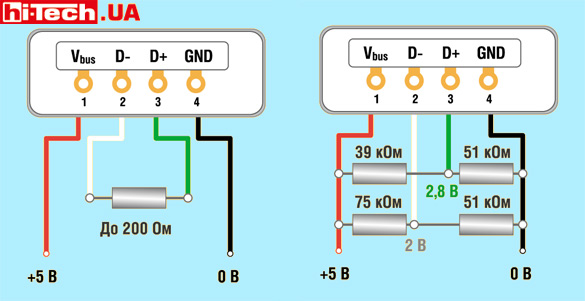
There are different connection options in USB ports, in which devices detect these ports as charger ports, and not as computer ports
But some manufacturers may use more complex solutions to identify “their” chargers. As an example, we provide an equivalent diagram of the USB port connections (right diagram in the figure) necessary for the iPad to determine that it is connected to “its” charger and “pull” the maximum current for which it is designed.
Regarding currents when charging mobile devices, I would like to note that if the power bank for a USB port indicates a current of 2 A, then this is the maximum current of this port. If a smartphone is designed to charge at 1 A, it will not burn out when connected to a 2 A port. The charge controller in the smartphone will limit the current to the required level.
Compare capacity
When comparing the battery capacity of smartphones, tablets and laptops (or other devices), the numbers given in mAh are not entirely suitable. A 6000 mAh battery on a tablet and a 6000 mAh laptop battery can differ greatly in capacity, even though they have the same value in mAh. It’s all about the different nominal voltage of the battery cells.
To compare capacity, data in mAh must be converted to Wh (convert mAh to Ah and multiply by the rated voltage of the battery). By the way, on batteries next to the capacity designation in mAh you can sometimes find the designation in Wh.
Example: The tablet battery capacity is 6000 mAh at a nominal voltage of 3.7 V. The capacity in Wh will be 22.2 Wh. The laptop battery capacity is 6000 mAh with a nominal voltage of 7.4 V. The capacity in Wh will be 44.4 Wh.
Of the eight models under consideration, there were no outright failed models. Judging by the data received, the stated capacity actually roughly corresponds to the capacity of the installed batteries. We came across a situation where the manufacturer did not overestimate, but on the contrary, underestimated the data. Read more about the review participants and the selection of the best models later in the material.
Summary table of characteristics (when loading an enlarged image, right-click and select open link in a new window)
FSP Beetle 5200
For our comparative review, we selected devices with a declared capacity of about 10,000 mAh, but having this device with a declared capacity of 5200 mAhwe still decided to include it in the review.
Judging by the shape of the case, it can be assumed that the FSP Beetle 5200 uses two 18650 cells with a capacity of 2600 mAh each. It is stated that Samsung batteries are used here. The case is made of high quality, but quite large. The FSP Beetle 5200 is comparable in size to some of the power banks in our test, which have twice the capacity.
In terms of characteristics, we have no complaints about the FSP Beetle 5200.
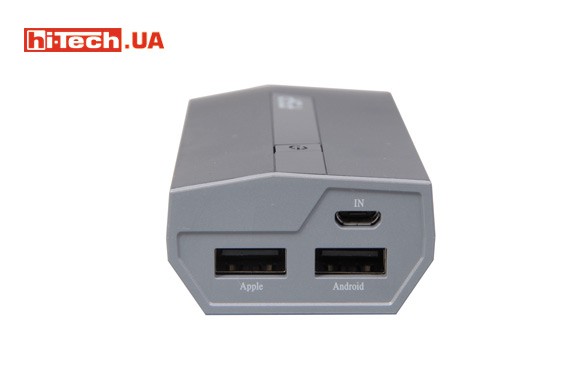
This designation of USB ports may be due to the special preparation of connectors for different devices (see the section on charging speed in the text)
The capacity fully corresponds to the declared one, the output currents are high. You just need to take into account that if you heavily load a port designed for a maximum current of 2.4 A, the second port will turn off.
At the moment, the device is not represented on our market, therefore it is not rated in the “Capacity/Cost” category.
Main characteristics of FSP Beetle 5200
| Declared capacity, mAh (Wh) | 5200 (19.2) |
| Measured capacity from USB output, Wh | 17.46 |
| Number of USB outputs | 2 |
| Maximum current of the first USB output | 2.4 A |
| Maximum current of the second USB output | 1.2 A |
| Transit charging | no |
| Dimensions | 103×45×25 mm |
| Supplier | FSP |
| Price | n. d. |
Rating:
+ high maximum current from one port
- quite bulky considering the capacity
Balance. TP-LINK TL-PB10400
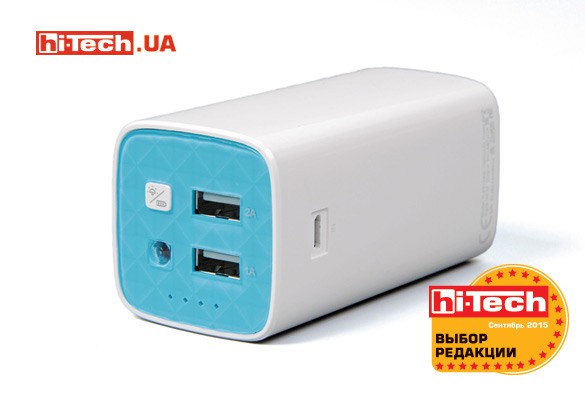
The built-in flashlight is modest in its capabilities. Its presence can be regarded as a pleasant bonus, but you shouldn’t rely on it too much
In terms of the amount of accumulated charge (capacity), the TP-LINK TL-PB10400, one of the leaders among 10,000-ton models, was second only to the APC Mobile Power Pack.
At close to maximum load on both USB outputs, there were no problems with the device. But not all participants are able to produce the maximum declared current, regardless of whether one USB port is used or both.
Inside there are four 18650 cells with a capacity of 2600 mAh each. The elements are arranged in two rows, due to which the TP-Link TL-PB10400 has a rather unusual shape. By the way, in some situations this shape may be inconvenient, for example, if you have a bag with flat compartments.
The device has a pleasant case both in appearance and in quality. It’s difficult to say how relevant a flashlight is in such a device (an LED is placed for illumination), but the case-bag is very appropriate. When charging, the smartphone is often placed next to the external battery, and when carrying it, you won’t have to worry about the devices scratching each other.
The TP-LINK TL-PB10400 is a well-equipped, well-balanced device with no significant shortcomings, and we rate it an Editors’ Choice.
Key characteristics of TP-LINK TL-PB10400
| Declared capacity, mAh (Wh) | 10,400 (37.1) |
| Measured capacity from USB output, Wh | 35.2 |
| Number of USB outputs | 2 |
| Maximum current of the first USB output | 2 A |
| Maximum current of the second USB output | 1 A |
| Transit charging | no |
| Additional features | flashlight, carrying pouch |
| Dimensions | 88.8×44.3×44.3 mm |
| Supplier | TP-LINK representation |
| Price | 749 UAH |
Rating:
+ among the 10,000 capacity models in the capacity test
+ good output parameters
+ carrying pouch included
- the shape of the case may not always be convenient
Higher than stated. APC Mobile Power Pack (M10BK-EC)
When we looked at the capacity test results, we were a little surprised. The point is not that the APC Mobile Power Pack (M10BK-EC) turned out to be the test leader in this parameter. It significantly outperformed other models with a claimed capacity of 10,000 mAh. If we calculate the capacity of the battery cells themselves based on the results obtained, taking into account losses in the controller, then for the APC Mobile Power Pack (M10BK-EC) we could safely indicate a capacity of 12 or 13 thousand mAh. The manufacturer in this case declared the capacity to be significantly lower than the real one.
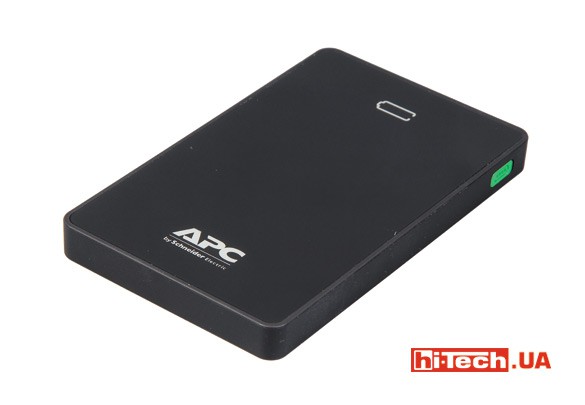
The body is quite long, but flat. It will probably not be difficult to fit this external battery into any tight niche.
Perhaps in this case the manufacturer decided to play it safe or was guided by the principle “modesty adorns.”
The maximum currents of USB ports are 2.4 and 1 A, while the total current cannot exceed 2.4 A.
There is a possibility of transit charging. It is implemented quite interestingly: the external battery will begin to charge only after the mobile device connected to it is fully charged.
We would call the quality of the case materials and the level of performance of this device very cool. The best solution is to use glossy top and bottom surfaces. They can become noticeably scratched quite quickly with use.
APC Mobile Power Pack (M10BK-EC) is definitely a cool, high-quality device, but its relatively high cost can significantly cool interest in this model.
Key Features of APC Mobile Power Pack (M10BK-EC)
| Declared capacity, mAh (Wh) | 10,000 (37) |
| Measured capacity from USB output, Wh | 41.1 |
| Number of USB outputs | 2 |
| Maximum current of the first USB output | 2.4 A |
| Maximum current of the second USB output | 1 A |
| Transit charging | yes |
| Dimensions | 146×88×13 mm |
| Supplier | MTI, distri.mti.ua |
| Price | 1220 UAH |
Rating:
+ highest measured capacitance of any device
+ high maximum current from one port
+ possibility of transit charging
- high price
Неплохо и недорого. Energenie EG-PC-008
The body of the model is quite simple. The soft touch coating in this case turned out to be not very practical: fingerprints remain quite noticeable.
When two ports are simultaneously loaded, you should not count on the maximum specified current values, but when operating separately, there are no problems.
In the kit you can find a set of adapters for mobile phones of different brands.
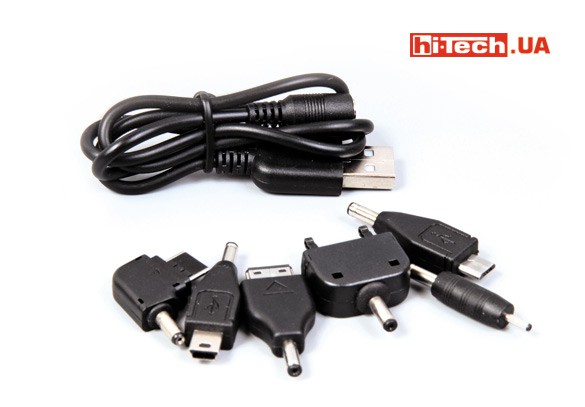
In terms of measured capacity, the device is on par with some other 10,000 mAh power banks in our review.
Taking into account the most affordable price, thisallowed Energenie EG-PC-008 to receive the highest score in the “capacity/cost” category.
For the money, it’s a pretty decent device, and we’re awarding it our Editors’ Choice in the Economy category.
Main characteristics of Energenie EG-PC-008
| Declared capacity, mAh (Wh) | 10,000 (37) |
| Measured capacity from USB output, Wh | 32.3 |
| Number of USB outputs | 2 |
| Maximum current of the first USB output | 2.1 A |
| Maximum current of the second USB output | 1.2 A |
| Transit charging | no |
| Additional features | set of adapters for different connectors of mobile phones |
| Dimensions | 123×78×23.5 mm |
| Supplier | EDG group |
| Price | 400 UAH |
Rating:
+ attractive price
+ set of adapters for different connectors of mobile phones
- easily soiled body
- relatively low total current from two ports
With burning eyes. Yoobao Thunder Power YB651
With the highest declared capacity, according to the test results, the device is only in second place in terms of the amount of charge delivered.
The model is not new and is becoming less common in stores. I liked the design of the case. There are rubberized inserts on the side panels, making it more difficult for the device to slip out of your hands.
The highlight of the model is the control button, stylized as the head of a Decepticon transformer. When charging, the robot’s eyes begin to glow red.
The maximum current of the more powerful USB output is 1.5 A. By modern standards, this is not enough.
The device works without problems with a good load on both USB ports. You can also find a backlight LED on the connector panel. Its power is relatively low.
By the way, Yoobao Thunder Power YB651 is the only external battery in the test that includes a power supply. Overall, considering the cost, the device looks very attractive.
Main characteristics of Yoobao Thunder Power YB651
| Declared capacity, mAh (Wh) | 13,000 (48.1) |
| Measured capacity from USB output, Wh | 38.2 |
| Number of USB outputs | 2 |
| Maximum current of the first USB output | 1.5 A |
| Maximum current of the second USB output | 1 A |
| Transit charging | no |
| Additional features | flashlight, power supply included |
| Dimensions | 157×138×35 mm |
| Supplier | Yoobao |
| Price | 780 UAH |
Rating:
+ high capacity
+ power supply included
- maximum charging current 1.5 A
Hit of the season. Xiaomi Mi Power Bank 10000
We think that those who have recently been at least somewhat interested in the topic of external batteries are probably familiar with Xiaomi products. Power banks of this brand are regular heroes of various discussions on forums on the Internet.
It’s all about the excellent balance of high level of performance, attractive design, characteristics and cost.
With a stated capacity of 10,000 mAh, pay attention to how compact this device is (the dimensions are comparable to a pack of cigarettes). By the way, Xiaomi Mi Power Bank 10000 is a slightly modified version of Xiaomi Mi Power Bank 10400. Now, not four, but three 18650 elements are installed in the case, but each element has a higher capacity.
We would give the Xiaomi Mi power bank 10000 our overall Editor’s Choice designation, but in our opinion, the whole picture is a little spoiled by the presence of a single USB port. But for its excellent appearance and quality of the case and compact dimensions, we award the device with the “Editor’s Choice” sign in the “Design” category.
Believe me, the device looks better in person than in the photos shown. Another interesting point: Xiaomi Mi Power Bank – 10000 is one of the few devices that supports transit charging.
Main characteristics of Xiaomi Mi Power Bank 10000
| Declared capacity, mAh (Wh) | 10,000 (36) |
| Measured capacity from USB output, Wh | 32.1 |
| Number of USB outputs | 1 |
| Maximum current of USB output | 2.1 A |
| Transit charging | yes |
| Dimensions | 90×60×22 mm |
| Supplier | GearBest |
| Price | 529 UAH |
Rating:
+ compact dimensions taking into account the capacity
+ attractive price
- only one USB output
Deja vu. Asus ZenPower ABTU005
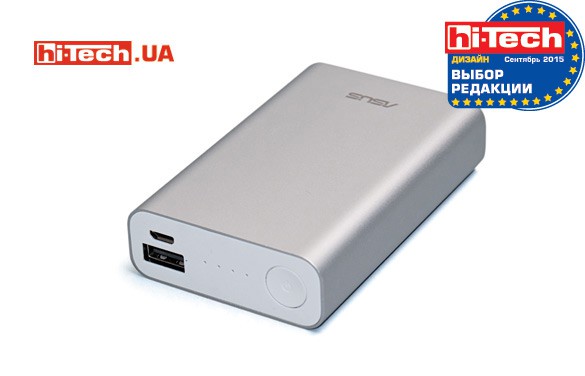
Asus ZenPower ABTU005 is almost a twin brother of the Xiaomi Mi power bank 10000 model in appearance and characteristics
Taking the Asus ZenPower ABTU005 out of the package, we immediately remembered the Xiaomi Mi Power Bank 10000. These models are practically twins.
The Asus ZenPower ABTU005 has slightly less rounded corners. You may also notice that the information indicators and USB connectors are located slightly differently.
Technically, the models are also very similar, but there are small differences. For Asus ZenPower ABTU005, a maximum current of 2.4 instead of 2.1 A and a capacity of 10,050 versus 10,000 mAh for Xiaomi are stated, while the same capacity in Wh is indicated for both models.
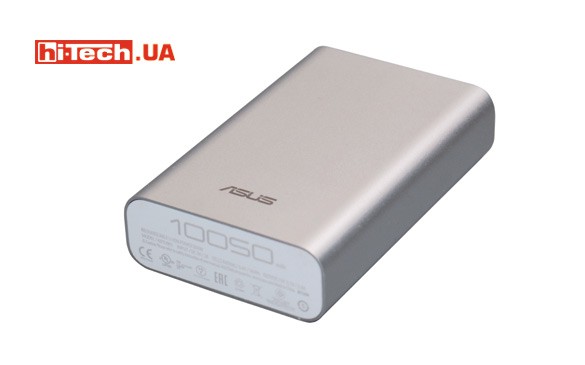
According to test results, the amount of energy delivered by Asus ZenPower ABTU005 turned out to be slightly higher compared to Xiaomi.
All the compliments we’ve heard about the Xiaomi Mi Power Bank 10000 also apply to the Asus ZenPower ABTU005, so it’s only logical that this model also receives our Editors’ Choice award in the Design category.
In terms of cost, the Asus ZenPower ABTU005 turned out to be significantly more expensive than the Xiaomi twin, which clearly does not play into the hands of Asus. But there has been no information yet that the Asus ZenPower ABTU005 is being counterfeited, but counterfeits of Xiaomi Mi Power Bank 10000 external batteries are now very common.
Main characteristics of Asus ZenPower ABTU005
| Declared capacity, mAh (Wh) | 10,500 (36) |
| Measured capacity from USB output, Wh | 32.9 |
| Number of USB outputs | 1 |
| USB output maximum current | 2.4 A |
| Transit charging | yes |
| Dimensions | 90.5×59×22 mm |
| Supplier | Asus representative |
| Price | 750 UAH |
Rating:
+ compact dimensions taking into account the capacity
+ high maximum current
- only one USB output
How we tested external batteries
To measure output currents and voltage, two types of load (resistors) were connected to the USB ports of external batteries. When connecting the first, the output current was up to 1 A, and when connecting the second, up to 2 A.
At the same time, we assessed how external batteries behave under load (each USB port separately), whether the voltage sags, and whether the protection turns on prematurely. Data was recorded with fully charged devices, 50% and 25% charged.
The behavior of external batteries was also recorded when all USB ports were simultaneously loaded, if the models had several USB ports.
When external batteries were discharged with a current of up to 1 A, a special device was used to record the battery capacity in mAh. Please note that this is the capacity removed from the USB port, and not from the battery cells themselves.
When constructing comparative histograms of the resulting capacity, the data was indicated in mAh (current from the USB port) and Wh. To convert the obtained values of mAh to Wh, the formula was used: X Wh = 1000 × Y mAh × U V, where Y mAh is the obtained capacity value in mAh using a special device from the USB port, U V — voltage at the USB port in volts, which differed slightly from model to model.
If we assume that the declared capacities of power banks fully correspond to the capacity of the battery cells that are installed in them, then by converting this capacity from mAh to Wh and comparing it with the resulting capacity in Wh at the output of the USB port, we can evaluate the operating efficiency power bank controllers, which convert the battery voltage (nominal voltage is usually 3.7 V) into the voltage at the USB output (5 V).
To evaluate how profitable a unit of capacity is in a particular model, we divided the resulting capacity in Wh by the cost of the device (the “capacity/cost” category). The cost of devices was indicated on a database from review device suppliers or based on prices in the hotline catalogue. The obtained data are presented in separate histograms.
Summary histograms
Engineer of the Test Laboratory
Don't miss interesting news
Subscribe to our channels and read announcements of high-tech news, tes
Oppo A6 Pro smartphone review: ambitious

Creating new mid-range smartphones is no easy task. Manufacturers have to balance performance, camera capabilities, displays, and the overall cost impact of each component. How the new Oppo A6 Pro balances these factors is discussed in our review.
Editor’s Choice 2025. Best devices of the year by hi-tech.ua

The best gaming laptops, mice for work, gaming keyboards, smartphones, and wireless headphones of 2025. Among them, we will highlight the most interesting ones and those that we can recommend buying.
Rogbid Enduro – smartwatch with large 1100 mAh battery and $30 price protection smart watches
Chinese company Rogbid introduced the Rogbid Enduro smartwatch, emphasizing autonomy and increased durability.
Over 19,000 games were released on Steam in 2025, half of which players didn’t even notice games Steam
In 2025, more than 19,000 games were released on the Steam platform – this is new record for the service and more than last year, when 18,559 releases were recorded.

